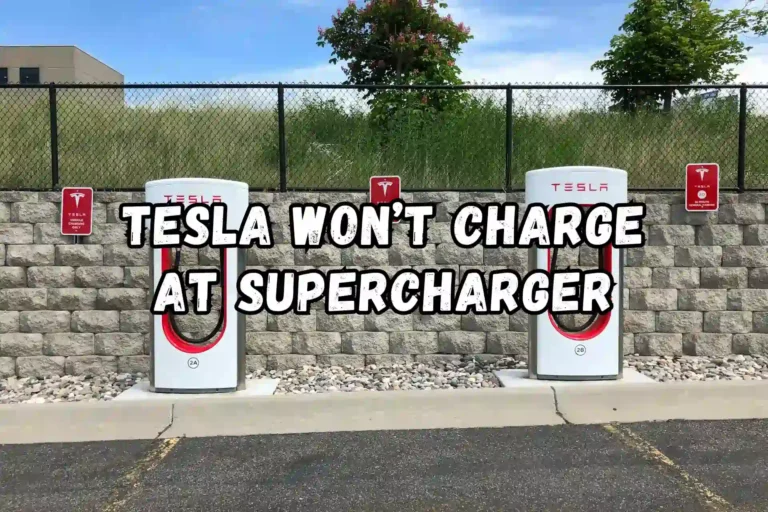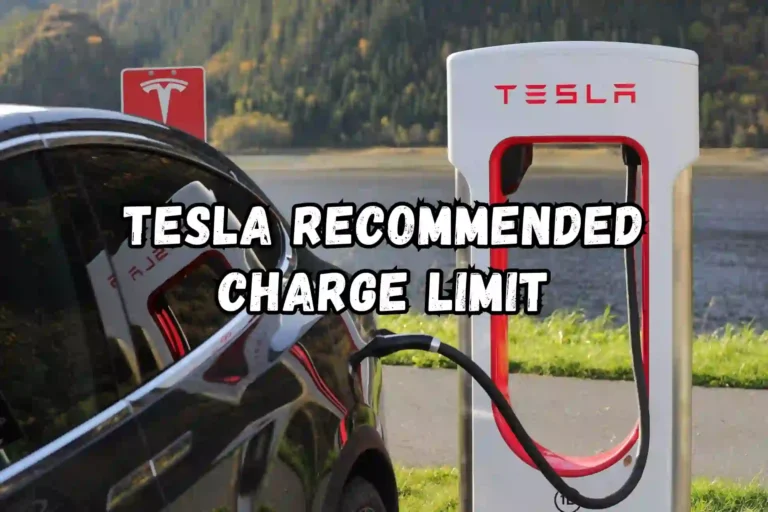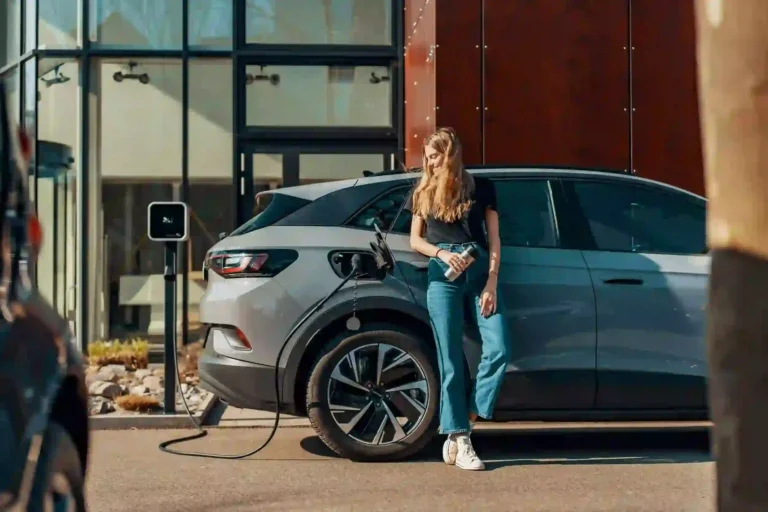As electric vehicles (EVs) handle smoothly and accelerate rapidly, they are an attractive alternative to gas-powered vehicles that cause high gas prices. The upfront cost of electric cars is higher than that of gas cars on average, but there are a number of models under $40,000 and federal tax credits to cushion the blow.
The charging infrastructure is steadily improving, too, so there is no need to worry about range anxiety. But here’s two questions rises firstly, how do electric cars work, and second is cost to charge a Tesla?.
The Basics of Electric Cars
EVs do not require explosive combustion via burned fuel to generate the energy needed to move like conventional internal combustion engines (ICEs). Electric motors connected to the wheels are powered by electrical energy stored in their battery packs, which are then powered by the electric energy stored in their battery packs.

Due to the fewer moving parts in electric vehicles, they require less maintenance than gas vehicles.
Hybrids, fully electric vehicles, and even hydrogen fuel cell-powered cars can all qualify as EVs, from plug-in hybrids to fully electric vehicles. The main difference between a hybrid car and an all-electric car is that hybrids utilize a relatively small amount of electricity.
However, they are still generally classified as gas-powered vehicles, albeit more efficient ones. We will focus here on how all-electric cars work.
The Science Behind the Battery
Almost every electric car has a battery pack made up of lithium-ion cells that provide power to move the car, run the air conditioner, and provide heat. It’s usually located between the wheels at the bottom of the vehicle.

You connect an electric car to the grid through an outlet or charging station, and it draws electricity until it’s charged. It works like a lithium-ion battery in your cell phone, but on a much larger scale. An EV’s battery’s capacity will determine how much energy it can hold, measured in kilowatt hours (kWh).
An EV with a higher number will have a greater range and will last longer on a single charge.
Many electric cars offer multiple size options (the larger the battery, the more expensive the car), and battery sizes vary for each EV.
In the 2024 Hyundai Kona Electric, for example, there are two battery options: a smaller 48.6kWh battery for short trips and a larger 64.8% battery with 260 miles. Rivian’s R1T pickup truck has a battery capacity more than double that of smaller, performance-focused vehicles. The standard pack (270 miles range, 105 kWh) and large pack (321 miles range, 135 kWh) offer three different battery capacities. The max pack (410 miles range, 180 kWh) offers the most range (410 miles range, 180 kWh).
It has become increasingly complicated since there are now two types of EVs on the market. Nicobalt manganese (NCM) batteries were the most common in the past, which offer high power and range as well as being energy dense. Lately, automakers have quietly switched to a new battery type called lithium iron phosphate (LFP), which is less expensive.
LFP batteries have been adopted by Tesla, Ford, and Rivian because they are cheaper—no expensive cobalt or nickel—and provide the same range as EPA-estimated batteries. However, they lose range faster in cold weather and have lower power ratings.
Although some battery companies are developing advanced LFP packs for future vehicles, NCM batteries are still generally considered the more desirable, premium option.
Even though both types of batteries produce direct current (DC) power, they follow the same basic principles in general. They are not connected to a typical wall outlet, but instead generate direct current (DC). In order to generate rotational force, that power must be converted into alternating current (AC). That’s where an electric vehicle’s motor comes in.
The Design of the Motor
Electric cars use electromagnets within their motors that are powered by their batteries to generate rotational force instead of using gasoline to pressurize and ignite their engines.

A motor consists of two magnet sets. The first is attached to the shaft that spins the wheels of the car, and the second is attached to the housing that surrounds the shaft. In the car, the force of magnets pushing away from each other turns the shaft, spins the wheels, and moves the car forward. Both magnets are charged with the same polarity, so they repel each other.
Changing their polarities constantly while the shaft turns is necessary to keep the magnets in a state of repulsion. Otherwise, they would eventually rotate to a point where they would attract rather than repel one another. Due to the DC polarity of an EV’s battery, an inverter is needed to keep the magnets constantly flipped between positive and negative, since AC power does this automatically.
To keep the rotational force going, an electric vehicle’s inverter flips polarity 60 times per second. For other vehicle systems that do not require alternating current (heating, infotainment, and lighting), a DC converter is used.
A driver can alter the frequency at which the current is sent to the motor, and the higher the frequency, the more often the polarity flips, resulting in more rotational force, or torque, that spins the wheels more quickly.
The Art of Charging
As opposed to gas-powered cars, electric cars can be charged in three different levels of charging stations in the US, starting with the slowest (level 1) and going up to the fastest (level 3).
- Charging with Level 1 chargers requires 120-volt power and is most useful in homes where you can charge overnight. A full charge can take as long as 20 hours to complete, but it adds about 40 miles of range to your phone over 8 hours.
- This makes them a common solution for overnight charging at home or at locations like hotels. Level 2 stations reach 240 volts and output anywhere between 10-25kW for a full charge in about eight hours. It is necessary to install a 240-volt outlet or home charging station in order to recharge an EV at your house if you do not have the appropriate plug. Level 2 stations are called Destination Chargers (versus Superchargers).
- EV batteries can be charged to around 80% using level 3 DC fast charging (DCFC) stations; this depends on the charging speed of the station (50-350 kWh), the maximum charging speed the vehicle supports, and external factors such as the weather. (Very cold weather can delay charging).

Electric vehicles come with level 1 cords that plug into their vehicles on one end and into standard wall outlets on the other, except for Tesla, which stopped including level 1 chargers in 2022.
The level 2 charger is a great option for new EV owners that want the fastest charging speeds at home while they assess whether they should install a level 2 charger.
As level 3 chargers draw significant power, they cannot be installed at home, since their electrical capacity exceeds what a home is capable of supporting. Electrify America, EVGo, and Tesla Superchargers are among the brands that are commonly found along highways, as well as around towns and cities.
Ford and Rivian EVs are currently able to charge at Superchargers, and Volvo, Polestar, and GM will follow soon. In 2025, Tesla’s NACS charging port will be used by all EV makers. Before then, car makers are offering adapters for other EVs to use the charging station.
Non-Teslas can now use approximately 15,000 Tesla Superchargers. However, Tesla has said non-Teslas will be charged a premium price for electricity and the amount of Superchargers in big cities limits availability.
Using level 3 fast-charging stations constantly might adversely affect your EV’s battery, according to some experts. While Electrek reports that Teslas that fast charge regularly do not suffer any additional degradation, a study has concluded that Teslas that do not fast charge regularly don’t suffer any extra degradation.
At this point, the most logical thing to do is to use what makes the most sense for your situation.
When parked at home, work, or anywhere else the car is parked throughout the day—at work, running errands, or the gym—you should routinely top off the charge during the day given the amount of time it takes to charge it.
As a result, the battery doesn’t lose too much charge throughout the day, resulting in less time spent charging the vehicle or sitting at a charging station.
Regenerative braking is another feature of electric cars, which utilizes the kinetic energy generated when the car is stopped to generate electrical energy in the battery. In the right circumstances, especially when driving in the city, this won’t fully recharge your electric car, but will make it more efficient.
How Far Can an EV Get on a Charge?
EV owners often worry about range anxiety. How many miles will an EV get on a charge as a gas car with a full tank? There are many factors to consider.

As of this writing, the US Department of Energy estimates the median range of electric vehicles to be 270 miles. However, there are wide differences between the upper and lower ends of the spectrum, including the Mini Cooper EV’s 114 miles (though the next generation may offer more) and the Lucid Air’s 516 miles.
During the moment and throughout the vehicle’s lifetime, there are many variables that can affect that range.
A battery’s size plays a crucial role in determining the range of an electric vehicle. However, no matter how high the capacity of an EV is, continuous highway driving, frequent quick accelerations, excessive fast charging, extreme weather, and natural aging can reduce its range.
A growing number of drivers are switching to electric cars as they become a more competitive option. The International Council on Clean Transportation estimates that electric cars will make up 9% of new car sales in 2023 in the US. In other places, such as Europe, they’ve reached 21% by August 2023—and 85% by Norway.
However, charging infrastructure needs to be improved.
For EV drivers, the best-case scenario is the ability to charge at home and at work, which essentially eliminates any need to take a break from the car to fill up.
It might not stop global warming by itself, but EVs can contribute to a larger campaign to rethink transportation and build greener transportation options.
Frequently Asked Question
How do electric cars work step by step?
1. Battery Power: Electric cars are powered by an onboard battery pack, usually lithium-ion, that stores electricity.
2. Electric Motor: The electricity from the battery is sent to an electric motor, which converts the electrical energy into mechanical energy to drive the wheels.
3. Acceleration: When you press the accelerator, the electric motor receives more power from the battery, increasing the speed of the car.
4. Regenerative Braking: During braking, the electric motor reverses its function, acting as a generator to convert kinetic energy back into electrical energy, which is stored in the battery.
5. Charging: When the battery runs low, it can be recharged by plugging into a charging station or a home charger.
Do electric cars charge while driving?
Generally, electric cars do not charge while driving. However, they use a process called regenerative braking, which captures some energy that would otherwise be lost during braking and sends it back to the battery. This process extends the driving range slightly but does not fully recharge the battery.
Do electric cars use petrol?
No, electric cars do not use petrol. They are powered solely by electricity stored in their batteries. However, hybrid vehicles, which have both an electric motor and a petrol engine, can use both electricity and petrol.
What are the disadvantages of electric vehicles?
1. Limited Range: Electric vehicles (EVs) typically have a shorter driving range compared to petrol or diesel cars.
2. Charging Infrastructure: While improving, the availability of charging stations is still limited in some areas, making long-distance travel less convenient.
3. Long Charging Times: Charging an EV can take significantly longer than refueling a petrol car, especially if a fast charger isn’t available.
4. Higher Initial Cost: EVs generally have a higher upfront cost compared to traditional vehicles, although this can be offset by lower running costs.
5. Battery Degradation: Over time, the battery’s capacity can degrade, reducing the vehicle’s range and efficiency.







